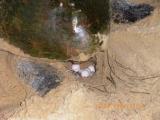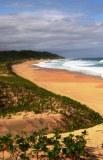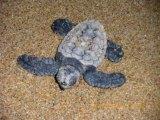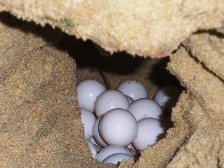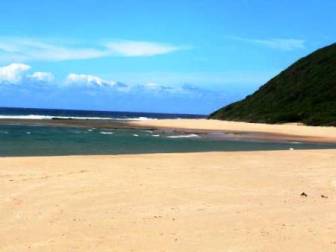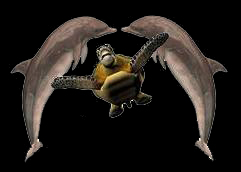 |
St Lucia South Africa
St Lucia Turtle Tours
|
|
|
|
Day Trips and Overnight turtle tours from Saint Lucia South Africa
St Lucia turtle nesting tours begin in November when Loggerhead and
Leatherback turtles come ashore on the golden beaches in the St Lucia
Turtle Sanctuary, to lay their eggs. On the St Lucia turtle nesting
tours we walk along the beach at night in search of turtles. At certain
stages during the nesting process, turtles can be approached, viewed
and photographed without causing disturbance to the turtles.
Professional tour guides ensure that no turtles are disturbed during St
Lucia Turtle Tours, which is also why we do not drive on the beach.
On our overnight St Lucia turtle tours to the Maputaland Marine
Sanctuary, we spend the night in a rustic bush camp in the forest in
paradise.
info@extremenaturetours.co.za
Tel: 076 4855 366 / 082 2575 612
|
|
|
Day Trips and Overnight Turtle Hatchling Tours
Once the female Loggerhead and Leatherback turtles have nested, the
eggs incubate for about 65 days, depending upon nest temperatures. On
St Lucia turtle hatchling tours, we walk along the beach in the turtle
sanctuary with very dim red flashlights looking for baby turtles as
they move down the beach towards the ocean. If you are going to be in
South Africa in the St Lucia area, this is a phenomenon not to be
missed.
Turtle Tours - Day Trips
On our St Lucia Shoreline turtle tours, we walk along the beach and high rocks, looking for and watching Loggerhead and Hawksbill turtles when they come up to the surface to breath and rest. On these St Lucia turtle tours, we also have the opportunity to snorkel in protected bays north of St Lucia in the iSimangaliso Wetlands Park.
|
|
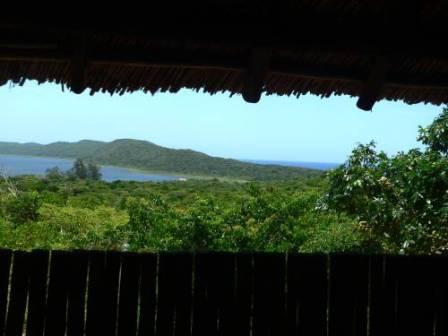 |
St Lucia Turtle Tour Guidelines
- No tour groups or individuals may go into the turtle nesting area unaccompanied by a guide.
- Tour groups must proceed silently and remain behind the turtle tour guide.
- Turtles which are still searching for a nesting site must not be approached under any circumstances.
- Turtles can be approached once they begin top lay their eggs, not before.
- All photos must be taken only from behind when the turtle is nesting and covering the nest. When on their way back to the water, turtles must be photographed from the front only.
- No touching of adult turtles, baby turtles or turtle eggs.
- All flash photography must be from a distance of at least 10m from the nesting turtle.
Turtle Conservation
Turtle numbers across the worlds oceans are dwindling and some populations, such as in Costa Rica, are under serious threat due to factors such as disturbance on turtle nesting beaches, turtle egg collection, and the killing of turtles for food and for use by traditional healers.
Ship strikes, gill netting, shark barrier netting, solid and chemical pollution, and vehicles driving on turtle nesting beaches are other major threats to adult and baby turtles.
Why vehicles on turtle nesting beaches pose a threat to nesting turtles and baby turtles:
In the late afternoon, female turtles begin to move towards their selected beaches to lay their eggs in the same area that they were born. Some turtles swim up up 4000km to get to the nesting sites. They look out for any disturbance while laying quietly in the shallows. During this stage, and while they are searching for a nesting site and digging the nest, they are extremely sensitive to any disturbance such as human or predator presence, lights, and unusual sounds. If disturbed during this stage, turtles will abandon the nesting site and head back to the water to look for a quieter spot later.
When baby turtles which are on their way to the ocean encounter and fall into deep vehicle tracks, they are often unable to get out of the tracks and end up following them until they die of exhaustion, dehydration or predation. Artificial lights such as vehicle headlights and spotlights put baby turtles off coarse, often preventing them from getting to the ocean before they are killed by crabs along the beach or birds in the morning.
Once a nesting turtle has layed her eggs, covered up and disguised the nesting site, the way she finds her way back to the water is by looking for, and following the area with the most light. This is the surf zone where the rolling surf emits light, not only because the foam is white, but also because of the presence of bioluminescent plankton which glows when it is rolled about in the waves. When artificial lights are present, the turtles follow those lights, and end up dragging themselves along the beach, parallel to the ocean for long distances.
When the wind is blowing, the wind blown sand makes it impossible to see the surface of the sand or baby turtles on their way to the sea. Vehicles can easily squash baby turtles and even run into females on their way to nest or returning to the water.
The general beach driving ban in South Africa was implemented because it is recognized that vehicles do cause damage to the beaches others, Ghost crab and Mole crab populations suffer. The St Lucia beach is testament to that, with healthy populations of these organisms now that no vehicles are driving along the beach. Dunes have also grown where there were no dunes before, because dune pioneers such as Scavola, can now establish themselves. The dunes act as a buffer against high seas and salt spry and play an important role in the protection of the dune forests.
Vehicles are a huge source of hydrocarbon pollution in the form of oil leaks, fumes and other fluids leaked from vehicles.
WDD✔
